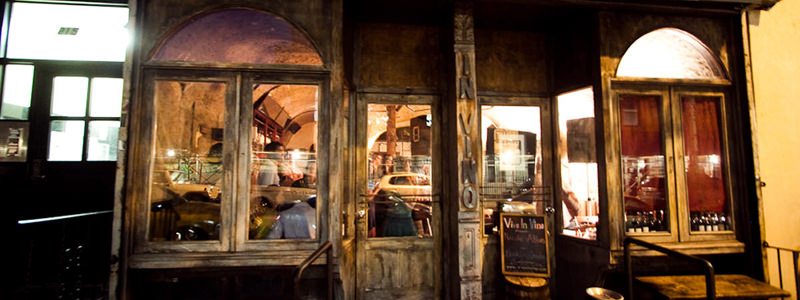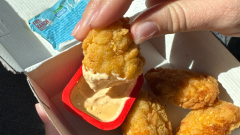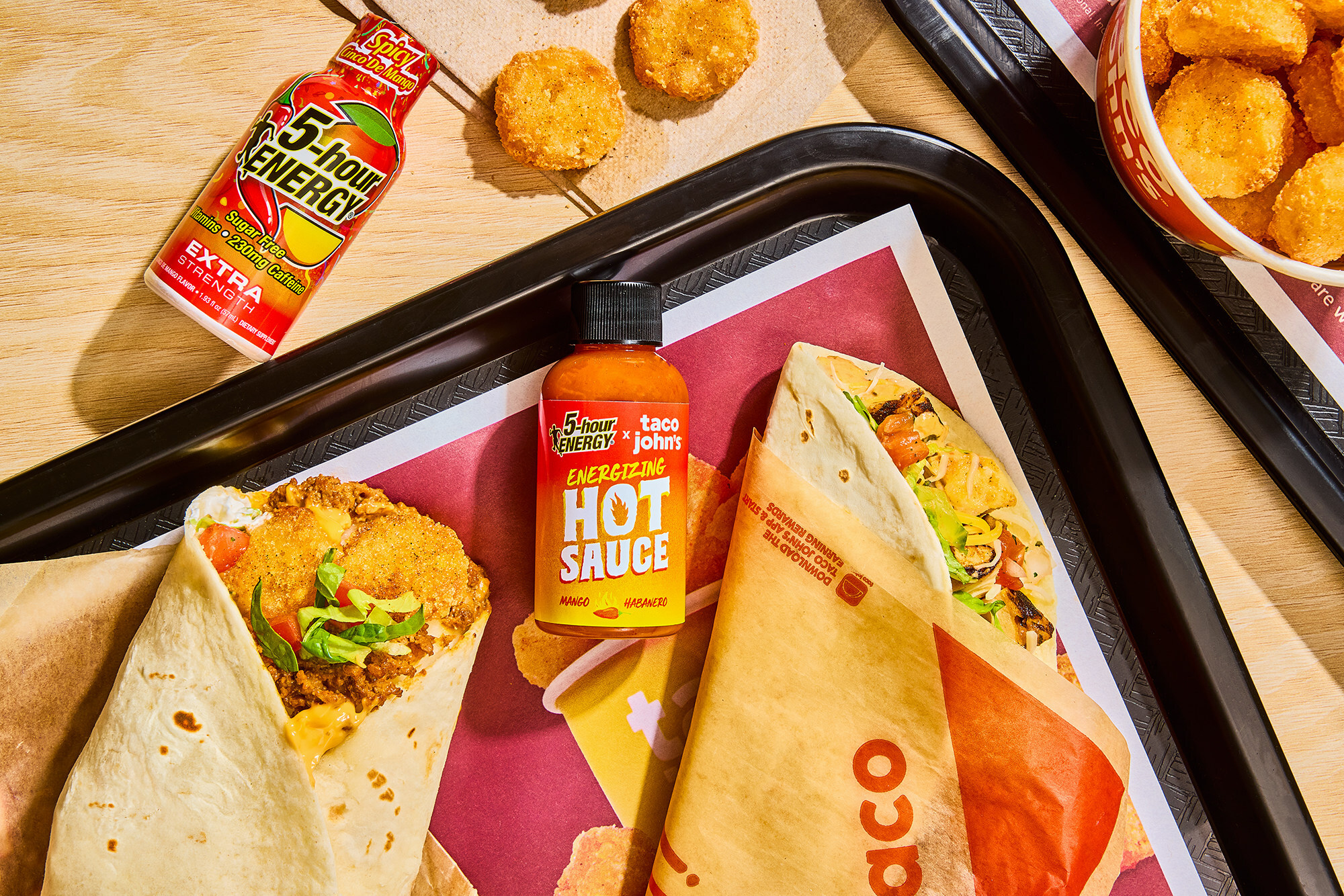A Guide to Eating Like a Real Italian, at Olive Garden

Written by VinePair‘s Keith Beavers
Italy is a magical place for food and wine. It’s as if every time you sit down at a table anywhere on the boot it’s a time for leisurely celebration. Here in the States, Italian restaurant owners like myself try to recreate that experience for you. There is a specific pace at which a formal Italian meal is enjoyed and although not all Italian restaurants will offer this pace exactly the same way, I’m going to share with you how to take control and have a when-in-Rome experience.
In Italy there are generally three types of eating establishments. First there’s the trattoria, which is similar to the French bistro or American cafe. Often trattorias have no menus, simply daily specials and wine is primarily served by the glass. They’re the perfect stopping point for a quick lunch and their owners aim to turn the tables quickly. Then you have the osteria, where menus are available but are small and focused; these are usually accompanied by a quaint wine list that pairs well with a leisurely lunch. And finally there is the restaurant where you sit down, take your time and have a full formal meal covering several courses. Here in the U.S. of A this concept is often combined with the first two styles of Italian restaurants to create an all-inclusive Italian experience. But you should know that whether you’re at a chain like the Olive Garden or a charming little mom and pop trattoria or even at a nicer ristorante like In Vino, where one is guided through the meal, you can navigate the whole experience yourself if you wish and create an awesome multi-course meal that will automatically transport you to the mountains of Piedmont or the rolling hills of Tuscany. Here’s how you do it.
So you’ve been seated, the menus and wine list have been presented, and you’re ready to dive in. What next? Let’s go on a date!
Aperitivo
The best way to start an Italian meal is with a glass of bubbly. Wine lists will often have an affordable glass pour of the house spumante (sparkling wine) and, if they do, this is definitely what you should order. This is the aperitivo. It’s meant to stimulate your appetite and get your palate excited for what comes next. Before you even look at your menu, order these two glasses of bubbly and then casually take a look at the first course, the antipasto.
Antipasto

Antipasto means “before the meal,” and in Italy these dishes are primarily made up of plates of food that receive no real cooking at all, such as fresh salumi, various cheeses and olives. Here in America we take the antipasto to another level, getting creative while trying to maintain the simplistic nature of this portion of the meal. Often that means you’ll see dishes labeled antipasto that have indeed been cooked, but regardless of whether they’re cooked or cold, the point is they’re meant for sharing. The best way to enjoy this course is to choose a couple of antipasti among the table and share them over a glass of white wine, a light red or even that bubbly you’re still sipping on; however, if you want to keep pace with the Italians, finish your bubbly first and then order your antipasti along with two glasses of the house white or red or ask for a suggestion if there is not a “house” pour. And if you see burrata on the menu, definitely add it to your order. Having fun yet? I know I am.
Primi

Italian cuisine is mostly about sharing and this is where the meal diverges a bit from the normal American pace. Primo in Italian means the first course and Primi (plural) traditionally consist of pasta dishes or casseroles such as lasagna that are a great bridge between the antipasto and the secondi. If you’re thinking lasagna seems nuts for a first course, since it usually puts you straight into a food coma, that’s because we often treat this course as something we’re supposed to order and eat by ourselves. But if you do as the Italians do and order a couple of primi, let’s say a lasagna, and a plate of fettuccine con funghi trifolati (pasta with mushrooms sautéed with garlic, parsley and olive oil), sharing both, you’ll still be more than ready to move into the next course.
It’s at this point in the meal that you may also want to order another glass of wine or start thinking about getting a bottle. This is the perfect time to tell your server what you want for the secondi, which might help them assist you in choosing the right wine. If you are at a restaurant that doesn’t assist with this, the best bet is to keep going by the glass.
Secondi/Contorni

In American restaurants we often equate the secondi with the entrée, but the word entrée is actually the French term for what the Italians call the antipasti or entry to the meal. Yet in North America we’ve taken the word and flipped it to mean the main course — got to love how language evolves! This course can either be ordered at the same time as when you choose your primi, or you can always ask to see the menu again following your primi course and continue the dialogue with your server if it is that kind of place. Now we’re finally at the point in the meal where most people order individual dishes, though some do still share, which are often larger and richer such as bistecca (steak) or a more involved seafood dish such as capesanta (scallops).
Along with ordering your secondi, you will often see a section on the menu called “contorni” (side dish). These are items the chef has created to complement the secondi, like roasted brussel sprouts with chestnuts or Tuscan kale with pearl onions. Ask your server which ones they like best to complement what you’ve ordered.
Dolce/Digestivi

La Dolce Vida. You’ve been living the sweet life, moving casually through the meal and have filled yourself with great wine, great food and great conversation. Your plates are cleared, the table is wiped down and the server then brings the dolce (dessert) menu. Italian dessert menus will likely have some sorbet, a gelato or two and some other specialties, such a torta di formaggio (cheesecake) with seasonal fruits. You may even see a cheese course of a set selection by the chef. In addition to this there might be a small selection of dessert wines or liquors.
Dessert wines can be a bit tricky, so here are some tips on how to get the best out of the end of your meal. Italian dessert wines are basically wines that are made from dried grapes. By using grapes that have basically turned into prunes, the winemaker is able to concentrate the sugars in the remaining juice to produce a clean, yet sweet, high-alcohol wine that is often served in three-ounce pours. The idea here is that the dessert wine IS the dessert. If you were to order a tiramisu and a dessert wine your palate may go into dolce overload. If you want a bite to eat with your dessert wine, order the cheese course or ask your server what would go well with your passito (dessert wine). Sometimes dessert wines are steeped in herbs and spices and are aromatic enough, like chinato, to be consumed with a sweet dessert, so ask your server what might go best.
If wine is not for you perhaps try a digestivo or liquor. Grappa is always a fantastic choice, or perhaps there’s the famous limoncello on the list, a booze that’s made from grain alcohol and whole lemons. These drinks are meant to encourage digestion and calm the stomach after a great meal. After that, and if it is not too late, you may want to have an espresso to seal the deal — in Italy a cappuccino is breakfast thing.
And there you have it! This will help you do what the Italians do. If the menu is categorized more for the American public (appetizer, pasta, entrée, sides) you may not be guided through your meal by your server but you can use this primer to craft an authentic experience with any Italian menu no matter where you’re dining.
Written by VinePair‘s Keith Beavers






















